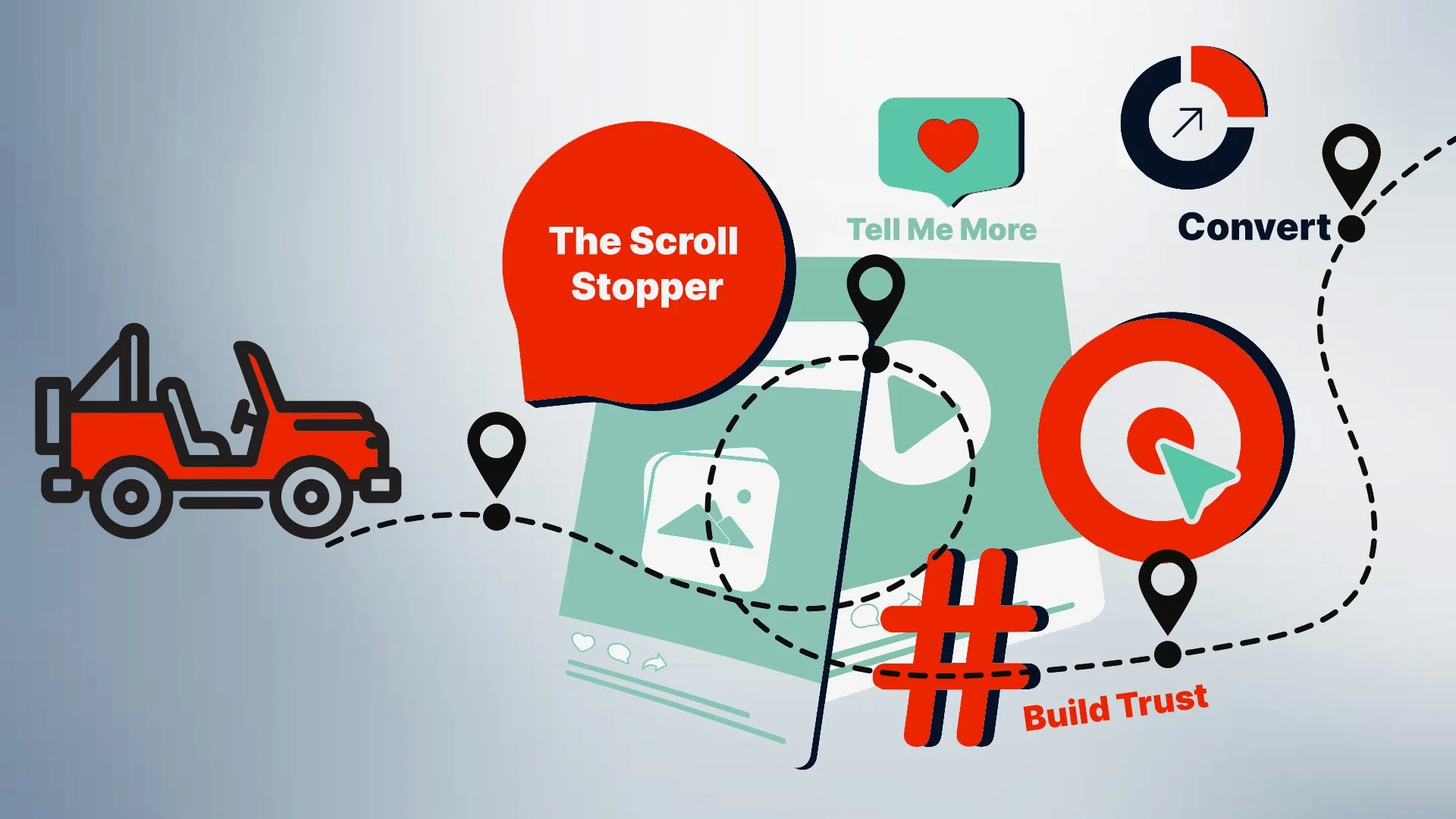Forget Content Pillars, Think In Content Stages
For years, marketers (including us) have been telling clients to “build around content pillars.” Pick your themes, stick to them, and publish religiously. It worked when consistency was the goal. But consistency isn’t the problem anymore, relevance is.
Pillars keep you organized. But they also keep you stuck. They box your ideas into categories that don’t move with your audience’s mindset. And audiences today don’t scroll in themes, they move through stages.
Why Pillars Fall Short
Content pillars assume your audience always wants the same kind of message: your thought leadership, your how-to guides, your behind-the-scenes posts. But people don’t experience your brand linearly.
Someone who’s just discovering you doesn’t need a detailed tutorial. Someone who’s ready to buy doesn’t need a vibe-y brand story. Pillars make sense for the marketer. Stages make sense for the buyer.
Enter: The Content Stage Model
Instead of organizing by topic, organize by intent.
Awareness: Content that earns attention. The scroll-stopper. The hook. The “what is this brand?” moment. Think clips, headlines, hot takes, and high-share moments.
Interest: Content that adds depth. The “tell me more” layer. This is where you share brand voice, perspective, and purpose. Think interviews, stories, or thoughtful carousels.
Consideration: Content that builds trust. Social proof, data, demos, reviews, case studies. This is your “show, don’t tell.”
Action: Content that converts. Clear offers, CTAs, urgency, or direct engagement. That’s the piece that gives people something to do next.
When you organize content this way, you’re mapping to behavior, not bureaucracy.
The Big Shift
The goal isn’t to have four buckets of content. It’s to make sure every message has a job to move someone from one stage to the next.
This approach lets you see where your strategy is over-weighted (too much awareness, not enough action), and where your content isn’t carrying its weight. It’s less about posting everything evenly and more about optimizing momentum.
As we begin to shift our thinking, here’s where we are starting with our clients:
Audit the last 30 posts. Label each one Awareness, Interest, Consideration, or Action.
Spot the gaps. Are we building trust or just chasing reach?
Build your calendar around flow, not themes. Every post should move the audience somewhere.
Final Thought
Content pillars tell the world what you care about. Content stages show that you understand what they care about and where they are in the journey.
So as we are speeding toward the end of 2025 and planning has already begun for 2026, let’s stop guarding our pillars and start building our pathways.

